Join us as we head off the beaten track on the little-known Italian Trans-Siberian vintage railway. Words and photos by Valentina Nicastro
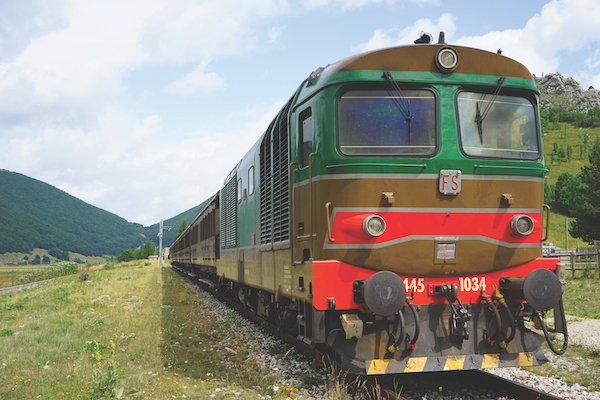
For as long as I can remember, I’ve always been fascinated by rail tracks and roaring engines, so you can imagine my excitement when the search for unexplored trails and off-the-beaten-path places in my homeland recently brought me aboard a special vintage train called the ‘Italian Trans-Siberian’.
Snaking through an unspoiled landscape of mountains, forests and narrow gorges resembling the legendary Moscow-Vladivostok route (hence the name), this historic train crosses the regions of Abruzzo and Molise along a path of 128 kilometres that was once part of the national railway network and today is one of Italy’s most surprising tourist attractions.
Engineering marvel
Officially opened on 18 September 1897, the Italian Trans-Siberian train line connects Sulmona, the confetti capital of Abruzzo, with the lacemaking centre of Isernia in Molise. It has always been considered an engineering marvel, owing to the outstanding technical features that were developed to enable travel through such an arduous landscape. The route encompasses 21 stations and runs through an impressive network of aqueducts, bridges and more than 50 tunnels, the longest of which measures 3,100 metres.

After being completely destroyed during the Second World War, the line was reactivated in the 1960s, but was then gradually abandoned with the advent of high-speed trains. However, in recent years a group of friends with a passion for railways founded the non-profit organization Le Rotaie, with the aim of restoring the old carriages and bringing the line back to life. They also teamed up with Fondazione FS, the company that manages the Italian rail network, to include the train in the Timeless Tracks programme that preserves and promotes Italy’s most beautiful historic train lines.
The original steam locomotive has been replaced by a diesel engine, but the magic of the journey remains unchanged. The historic train departs from Sulmona (1 – see map below) at 328m above sea level and reaches an altitude of 1,268m at the station of Rivisondoli-Pescocostanzo before starting its descent towards Isernia – which makes this little station serving the two villages of Rivisondoli and Pescocostanzo, near the border between Abruzzo and Molise, the point at which this becomes the second highest railway in Italy, after the one that crosses the Brenner Pass.
The train runs every Sunday, all year round and, depending on the season, the trip takes on different thematic itineraries, from wine and food fairs to Christmas markets. The return journey takes an average of eight hours and includes stops for exploring the historic and culinary delights of the area.
A journey back in time
When I arrive at the train station early on Sunday morning, the Italian Trans-Siberian train is proudly standing on track 1, waiting for passengers with its five big brown carriages. Greenish-gold velvet curtains hang in the windows and allow glimpses of the shiny wooden benches running along both sides of the wagon, facing each other.
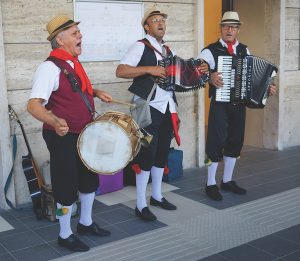
I hop on the train accompanied by the traditional songs played by three folk musicians who will be our travel companions for the entire trip. Once inside, I‘m immediately transported back to the atmospheres of the early 1900s, when travel wasn’t simply a way to get somewhere, it was a true event. The interiors are stunning and retain historic features like original brake pads, old prints and antique lighting. The vintage wagons are divided into a standard class with wooden benches and a first-class featuring red padded armchairs.
At 8:45am sharp the whistle of the train conductor kick-starts the adventure and I make my way to the window seat I carefully selected during booking, ready to enjoy the show. After some initial gentle curves, the urban contours slowly fade and I catch sight of the majestic mountains and viaducts we’ll soon cross. I cannot help but smile at the thought of the extraordinary train ride ahead! In each wagon there are representatives of Le Rotaie who eagerly talk us through the history and geography of the line, while the folk musicians keep the atmosphere cheerful, drawing passengers into their performances.
Verdant grazing lands and mountainous sceneries pass by the windows, and after about one hour it’s time for the first stop at Palena (2), a little village immersed in the Majella National Park. At the station there are a bunch of colourful stalls selling artisanal crafts and delicious local snacks and I cannot resist a fragrant deep-fried pizza with olives. The centre of the village is a little further away, so I take a walk near the station to admire the stunning high plateau system known as Altipiani Maggiori before continuing the trip. Sadly the weather is not great, but somehow this makes the spectacular landscape in front of me even more dramatic.
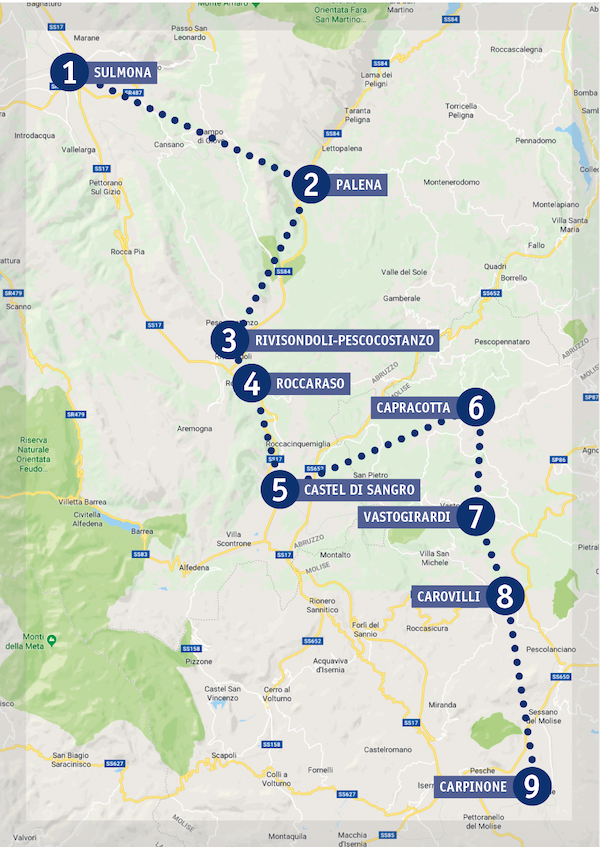
Back on the train, we soon reach the highest altitude at the Rivisondoli-Pescocostanzo station (3) and slowly continue down through Roccaraso (4), Castel di Sangro (5) and Capracotta (6) – the station that officially marks our entry into the region of Molise. Then we continue through Vastogirardi (7) before stopping at Carovilli (8). This is an area renowned for the production of excellent caciocavallo cheese and truffles, and passengers can choose whether to disembark and explore the surroundings or to continue the journey to the final destination. I’m tempted, but then I decide to stay on board to see how the landscape evolves. I just can’t take my eyes off the window.
We continue the journey through forests and tratturi (the old pastoral trails), with views over historic villages like Pescolanciano, with its medieval castle perched on top of a rocky spur, and the ancient hamlet of Pesche, before reaching Carpinone (9), the last stop on this Sunday’s itinerary. We’ll stay here for the rest of the afternoon to explore the village before returning to Sulmona.
The live music and stalls at the back of the station offer a nice welcome despite the pouring rain. I’m determined not to let the rain ruin this fantastic adventure, so I grab a sandwich with cured meat and pecorino cheese followed by a glass of chilled peaches soaked in red wine (aka ‘drunken peaches’) to fuel up on before setting off to visit the historical centre.
Carpinone is a charming, sleepy village guarded by the remains of the 11th-century Caldora Castle sitting on top of a rocky spur. Its cobbled alleyways are a true delight to explore and open onto fascinating corners that are every photographer’s dream, from ancient stone houses to colourful murals. For the more adventurous traveller, there is the possibility here to join one of the 4×4 off-road excursions organised by Molise Explorer along the Carpino river, in the countryside around the village.
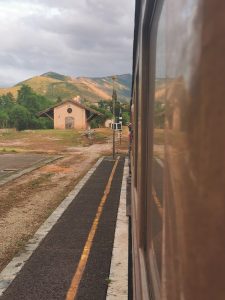
Newspaper clippings
Locals are really friendly and eager to exchange a few words, and before I realise it I’m sitting at the table of a bar with a lovely lady showing me old newspaper clippings about the history of the Trans-Siberian train and how the line was completely abandoned for years, leaving these remote communities completely cut out. Now, that’s exactly why I love travelling off the beaten path!
At 5pm the train is ready to depart for the journey back to Sulmona. I cosy up in my seat, I’m tired but my eyes refuse to close, there’s a whole return journey to follow from the window. After a couple of technical stops along the way, we arrive in Sulmona at 8pm. It’s been a long day, but what an adventure! The Italian Trans-Siberian train is truly a little jewel in Italy, and one that perfectly exemplifies the old adage that travel is not about the destination, but the journey itself.
Where to stay
B&B Susi is a great base, being only steps from Sulmona station. Rooms are basic and bathrooms are shared, but the lovely owners keep them spotless, going above and beyond to accommodate any needs. If you prefer something a little more glamorous, B&B Suite Salini in the town centre is another great place.
For those looking to stay overnight in one of the villages reached by the train, there are special packages including train tickets and accommodation in local farms and B&Bs listed at the Transiberiana d’Italia website.
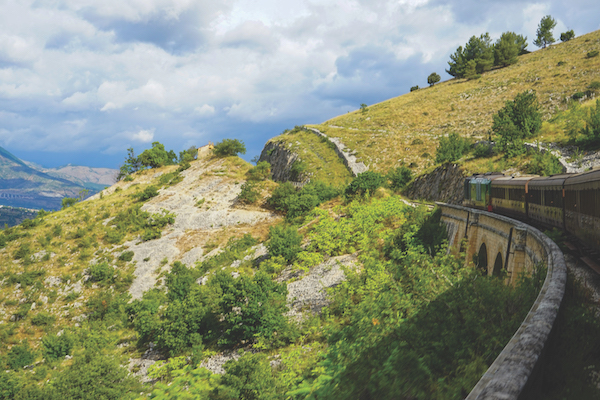
More information
The complete schedule of the Italian Trans-Siberian train is available on Le Rotaie website, albeit in Italian only. Alternatively, you can contact them via email – prenotazioni@lerotaie.com – or through their Facebook page for further information.
Return tickets cost €36 for adults and €22 for children (0-4 years travel for free), and you can select the seat of your choice in one of the two available classes: 1st class (‘Corbellini’ coach) and 2nd class. Once the booking is finalised, you will receive a confirmation by email with the reservation number, which you’ll need to show to the conductor on the trip.
You can bring strollers and bulky luggage, but these will be stored in a special luggage compartment at the end of the train.
The trip is amazing in all seasons, from snowy winters to sun-drenched summers, but I’ve been told that autumn is the undisputed winner, with the incredible splashes of colours that accentuate the landscape.
For more great Italian train journeys, check out our archive
